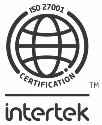5 Ways Core System MVPs Provide Proof of Value

Minimum Viable Products (MVPs) are becoming increasingly popular options for creating value in a modern changing insurance market. Digital transformation has rapidly accelerated since the pandemic. It has highlighted the need for digital solutions, and more importantly, the expectation of customers for new, innovative, and personalised products and offerings.
An MVP is a stripped-back version of a specific product that only includes enough features to be usable by early customers. The goal is to use customer feedback to optimise the product and launch it as quickly as possible. This approach provides value for money, reduces development costs, and gathers data and feedback that can be used to improve future iterations.
Being the first to market with an innovative product is critical for staying ahead of the competition and remaining a relevant figurehead in the insurance industry. Rapidly delivering new products is only achievable through the release of scaled-back products, or MVPs.
Read on and find out five ways that deploying core system MVPs is proving their value in the fast-paced insurance sector.
Testing UI/UX capabilities
Building a successful product that results in high user engagement is no easy task. According to AppFlyer, 50% of apps are uninstalled within a month of being downloaded. The number one goal of an effective UX strategy is to retain users by providing continuous value. MVPs present an excellent opportunity to learn more about a target market, and what they want from a product or service. With an MVP, businesses can gather the necessary data and insights on how users interact with your product, and then identify new opportunities or optimise the product to provide a better user experience.
MVPs can also be useful in mapping out user journeys, and understanding how to get a consumer from point A to point B. This knowledge could then help a designer understand which features are needed in the product, and whether the first iteration is moving in the right direction.
MVP’s and saving costs
In the midst of a cost-of-living crisis, many firms feel the pinch as consumers de-prioritise discretionary spending such as insurance products. As a result, insurers will undoubtedly consider ways to optimise spending. To avoid lengthy and costly development processes which require a lot of resources and funding, businesses should consider using MVPs to cut costs during the build phase.
Developing scaled-back products decreases the resource time for products, therefore reducing end-to-end costs. By mitigating risks, MVPs can also stop businesses from wasting cash on developing fully-fledged products that aren’t suitable for their target market. By finding out early on whether you’re building the right product, you can save valuable time and money.
Delivering speed-to-market
In today’s digital society, user expectations are rising dramatically, and insurance firms are feeling the pressure to release new products at speed and beat the competition. Research recently conducted by Google Ads found that customer expectations and the need to receive products ‘instantly’ is increasing, with growing searches for “late night shopping,” “24/7 customer service,” and “next day delivery.”
When insurers MVP new products or services, this can cut down development time from 3-6 months to a matter of weeks. This allows products to enter the market quicker, and stay ahead of other firms and emerging start-ups.
Defining market demand
While a business may come up with a great idea for a new product or service, if there is no demand for that product, then their efforts could be meaningless. For example, a firm could launch a pay-per-drive automotive insurance product, only to learn that their customers would prefer a pay-per-hour model. Or, it may turn out that existing products on the market already satisfy your potential client's needs and so the product lacks a competitive advantage. The sooner you find out the market demand for a product, the more time and money you save in its development.
An MVP is all about testing what works and what doesn’t, which is crucial to understanding market demand. Analysing the success rate and user interactions of MVPs can define consumer needs quickly, saving budget and resources if the product doesn’t perform to expectations.
Getting stakeholder buy-in
Developing an MVP is an effective way to secure this buy-in from stakeholders as it allows businesses to test an idea before going to investors. From this test-and-learn approach, organisations minimise the number of risks for investors, and creates room for a solid business case that demonstrates the market validity of the product.
The lower cost and resources needed, combined with a higher proof of value can prompt easier buy-ins from stakeholders, which will speed up the development and launch process significantly.
Optimise the MVP build process with INSTANDA
By partnering with INSTANDA, you’ll receive access to the right tools and technologies to build innovative products at pace. INSTANDA’s no-code allows MGAs and insurers to design and release products within weeks at a lower total cost of ownership, targeting first-to-market products for competitive advantage.
With INSTANDA, insurers can create a bespoke product tailored to their target audience, and diversify their offerings without overreliance on third parties. Create new products to meet market demand, test products effectively, and make changes quickly according to customer feedback.
To find out more about INSTANDA core insurance platform, don’t hesitate to get in touch with us.





